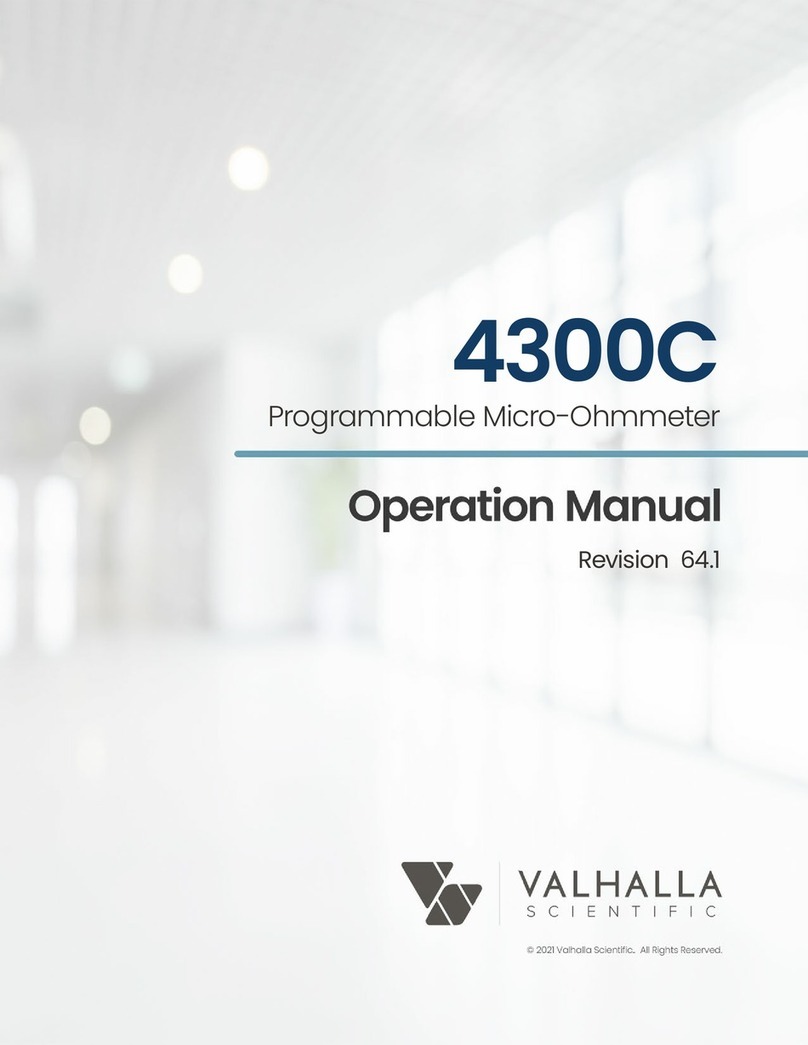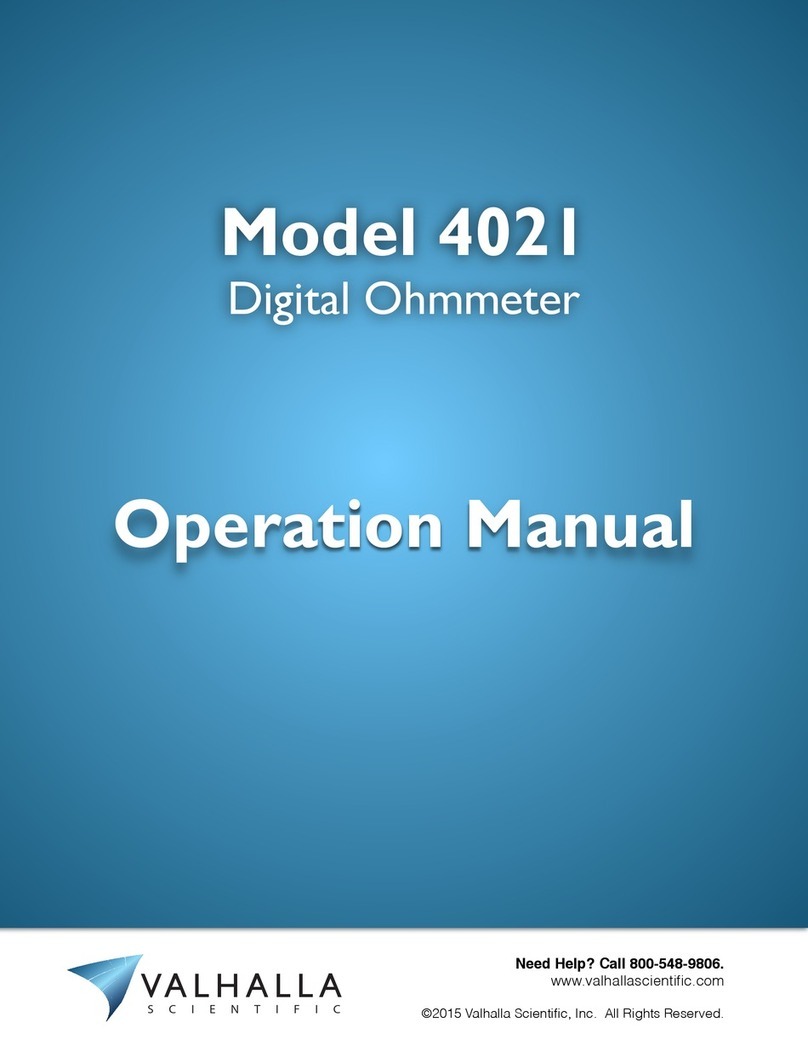
10
3-2. Test Leads
Option K: General-Purpose Lead Set
Option "K" is a shielded, 4-wire Kelvin cable
set, forty-eight inches in length terminated in
"KCS" gold-plated clips.
Option KCS: Gold-Plated Clips
Option "KCS" is a light-weight, gold-plated
Kelvin clip set for 4-wire measurements on
smaller components and leads. Clips open to
1/2 inch and accommodate test currents of up
to 10 amperes.
Option KK: Heavy-Duty Cable Set
Option "KK" is a heavy-duty 4-wire Kelvin
cable set, 48-inches in length terminated in
"JAWS" clamps for connecting to large
motors, bushings, etc. Opening is 2". A
variation of this cable set is Option "KL"
which is 10 feet in length.
Option JAWS: Heavy-Duty Clamps
Option "JAWS" are the heavy-duty clamps
used to terminate Option "KK".
Option MP-1: Kelvin Micro-Probes
Option "MP-1" is a 48-inch shielded Kelvin 4-
wire cable set with a 1-ampere test current
capacity employing a set of Kelvin Micro-
Probes. The probes are equipped with
stainless steel V-1 tips separated by 0.05
inches.
Option MP-2: Kelvin Mini-Probes
Option "MP-2" is a 48-inch shielded 4-wire
cable set equipped with Kelvin Mini-Probes
having spring loaded stainless steel tips. The
V-1 tips are separated by 0.18 inches. Test
current capacity is 10 amperes.
Option MP-4/MP-5: Surface Probes
These probes permit rapid, repeatable
bonding testing on a variety of screened or
flat surfaces. Test current is evenly
distributed through the probe base while
sensing is accomplished via a spring loaded
center contact. The MP-4 target area is 1" in
diameter. The MP-5 target area is .4" in
diameter. The current capacity of both probes
is 10 amperes.
Option JB-2: Rear Bendix Connectors
Option "JB-2" is a set of rear-mounted
positive-mating locking Bendix style
connectors. The mating cable set is Option
"KC". See drawing number 4300-407 at the
back of this manual.
Option KC: Bendix Cable Set
Option "KC" is a heavy-duty 4-wire Bendix
style lead set. Option KC must be used with
Option JB-2 above.
Option BBL: Banana-to-Banana Cable
Option "BBL" is a 48" shielded cable
terminated in dual banana plugs. This cable
may be used for voltage and current
connections to the ohmmeter.
Option SL-48: Low-Thermal Leads
Option "SL-48" is a 48" shielded lead set
terminated in gold-plated spade lugs. This
lead set is designed to eliminate problems
caused by thermal EMF's and is rated for the
maximum output current of the instrument.
Option C: Banana-to-Clip Cable
Option "C" is a 48" general-purpose shielded
lead set terminated on one end in a dual
banana plug and on the other end in red and
black copper alligator clips.






























